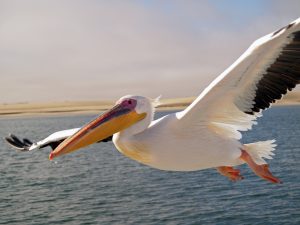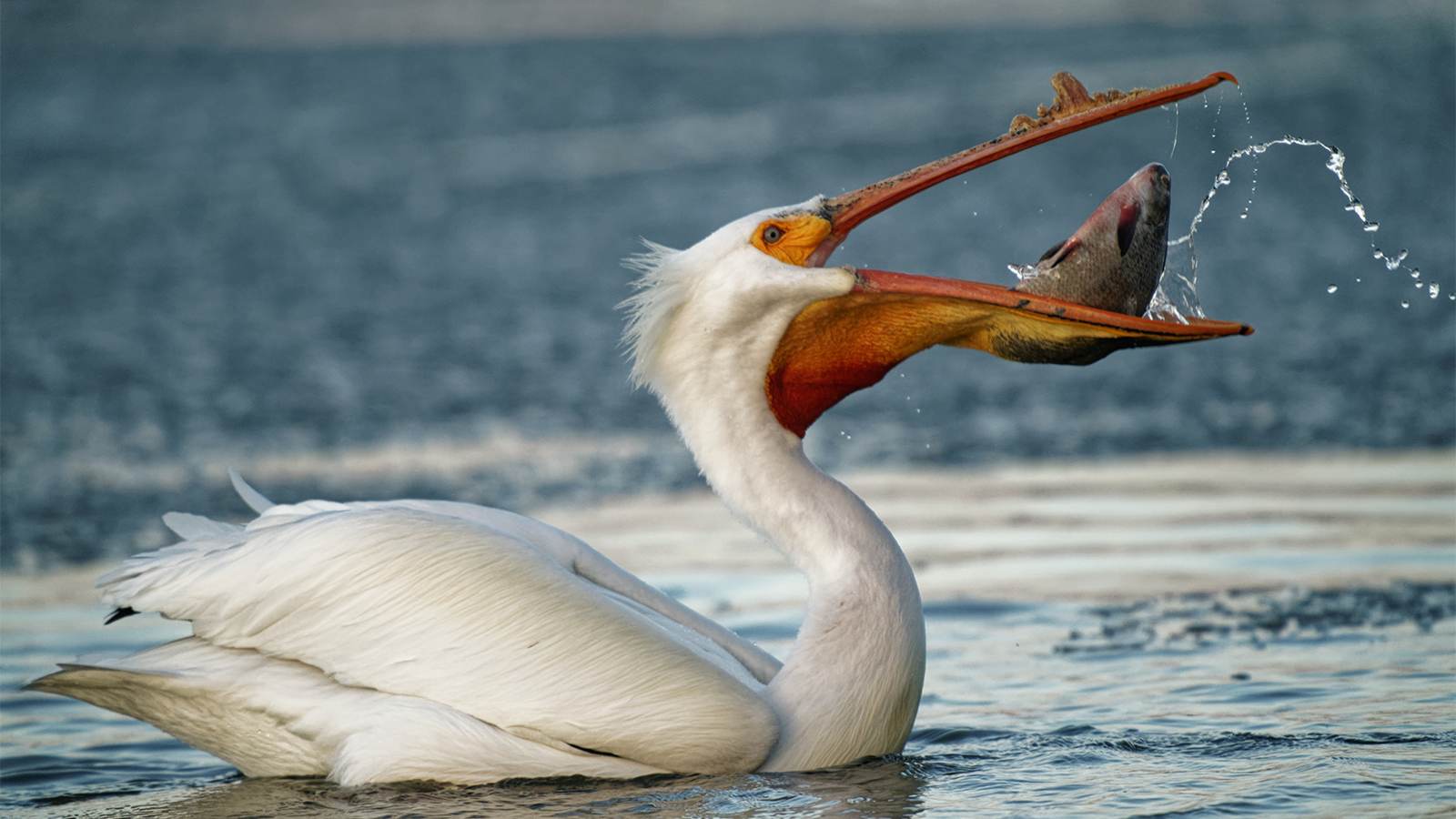Pelican mouths are capable of holding three times more fish than their stomach, however they do not generally keep fish in there for long.
Despite what Finding Nemo may have led you to believe, fish don’t take fun journeys in pelican mouths. In fact, once they’re in there they don’t have much time before they’re, well, eaten! Pelican mouths are an iconic feature of the sea bird, perhaps one of the most iconic features of any bird. That’s why i want to give you a bit more information about this remarkable adaptation!

Pelicans; a run down
Before we get into the nitty gritty of pelican mouths, lets first cover some basic pelican details.
First of, pelicans tend to stay in groups like many other birds. A large gathering of birds is known as a colony (or flock if you want to be less grandiose). Pelicans travel in flocks, hunt in flocks and mate in flocks; they’re social birds!
If you’re wondering what exactly it is that they hunt, the answer isn’t too shocking. Pelicans eat primarily fish that they catch in their large beaks/mouth pouches. More on that in a moment.
Pelicans are able to swim thanks to powerful legs and webbed feet. They rub an oily secretion over their plumage to provide a natural form of water proofing. Both of these adaptations make them ideal sea faring birds.
Pelican mouths, at last
Okay now for the moment you’ve all been waiting for; let’s talk about pelican mouths.
Before pelicans can actually catch fish, they must first make them more easily accessible. Flocks of pelicans assemble in a U-shape formation and beat their wings on the waters surface. This drives fish into shallower water, where they are literally like fish in a barrel. From here, pelicans simply scoop them right up.

Per catch, pelicans will generally catch more than one fish which do not get carried far at all. Instead, the pelican will begin by tipping its head forward. This allows all the water that has been scooped up with the fish to drain out of the pelican’s beak. Then, they tip their heads straight back and swallow their bountiful collection of fish! Think of pelican mouths as mother nature’s fishing net.
Pelicans are carnivorous, meaning they only eat meat, and get pretty much all of their food from in or around the ocean. I said earlier that fish primarily eat fish, which is true. Depending on the size of the bird, pelicans are able to eat fish ranging from a few inches to a few feet in length! Absolutely mind boggling to think about.
However, there are some other members of their diet that i failed to mention. Their advanced culinary pallet includes certain crustaceans (namely crayfish and shrimp) as well as amphibious creatures, such as frogs and salamanders. They will also eat turtles which is a fact that shocked me in and of itself, but even more shocking; pelicans eat other small birds! In fact, there have even been sightings of pelicans swallowing pigeons!

So, next time you watch Finding Nemo remember that pelicans aren’t taxis for fish; they’re hungry feathered killers!
Extra information
Animal-Club provides animal parties or animal handling workshops. You will be able to see, learn and interact with many wonderful animals with the help of our presenters. Our mobile zoo has many friendly animals such as rabbits, tarantulas, geckos, vinegaroons and more, perfect for an animal party. We can also come over to your school for an animal school visit or arrange for an animal workshop with us where the children can learn about looking after animals and animal behaviour, and have fun too.



